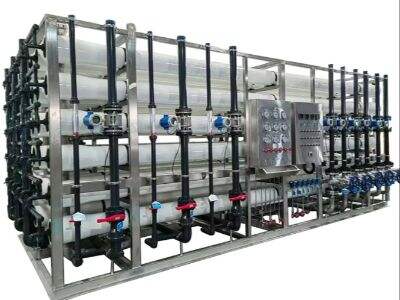If your house is equipped with a reverse osmosis (RO) system, it is important to know how to take care of it. Regular maintenance guarantees the smooth operation of your RO filtration system, making the water you drink treated and pure. If you know how this system works, you will be able to take care of it in the best possible way.
Therefore, an RO system is designed to purify the water you also drink. It takes out the nasty stuff, such as germs, chemicals, and small minerals that can damage us. It does this by pushing water through a membrane, a unique form of filter. The membrane traps all the nasty stuff in the water. But the longer it's used, this filter can become obstipated, and this means that it might not work harmoniously anymore, and your water won't be as cleaned as it ought to be.
How to Keep Your RO System
Here's what you can do so you can be assured that you're getting the best performance out of your reverse osmosis ro water filter system:
The pre–filter needs to be replaced every six months. This is important because it stops big particles from getting into the RO membrane and it makes the whole unit cleaner. If you don't alter it, it will get clogged up and let bad things in.
to Keep Your Ro System Clean Regularly You want to clean it often to avoid germs and other undesirable substance to build up inside of it. A clean system functions far better and makes your water secure.
RO membrane needs to be replaced once in 2-3 years. This membrane is the component that really cleans the water. If you don't replace it when you're supposed to, it could stop picking up on all the baddies. This is really important to the safety of your drinking water.
Replace the carbon filter annually. The carbon filter works to eliminate any residual impurities in the water and can improve the taste as well. If this filter is old, it may not be working properly.
Things You Can Do to Ensure Your RO System Continues to Work Well
Here are a few simple steps to help make sure your ro filtration system is working:
Check the water pressure regularly. Adjust the water pressure according to manufacturer instructions. That keeps the system operating as it's supposed to.
Examine the storage tank. You must ensure that the tank operates and is not leaking. A tank leak can cause issues for the entire system.
You will want to wash the valves and connections. This is imperative since it avoids mineral deposits that will cause the system to be less effective over time. Having these parts free of any dust enables the system to work efficiently.
At least once a year, sanitize your RO system. Sanitize means you use a special solution that will kill the germs and other baddies. They rinse the system out with this and that solution in order to keep things clean and safe.
Troubleshooting Issues Common to RO Systems
Now, no matter how well you take care of your RO system, sometimes things can go wrong. Here are a couple of issues which you might observe:
Low water pressure: If you discover that the water pressure is below the normal, it could be an indication of a blocked membrane or if the pump is not functioning properly. In such a situation, check to the filters. Replace them if they are clogged.
Water with unpleasant taste or odor: If your water has an unpleasant taste or odor, it could be an indication that germs or nasty things enter the system. If this is the situation, you need to sanitize the system and replace the carbon filter to fix the problem.
But Here Are Some Tips to Keep Your RO System in Top Condition
Some other tips that can assist you in keeping your RO system in top condition are:
Do not use the system with hot water. The sensitive membrane can be destroyed and Aha can lose its effectiveness with hot water. For best results, always use cold or room temp water.
Ensure all connections and hoses are tight. Lock everything up so nothing will leak. Leaks waste water and make the system work harder than it needs to.
TDS meter: Ultrafiltration Systems a handy tool to monitor water quality A TDS meter tests the total dissolved solids in your water. If it reads high, that's an indication to replace the RO membrane so the water is fresh.
To make sure your RO system will be appropriate for your family. If you live with a large family or use lots of water, you might need a larger system. This is important so the system can monitor how much water you consume.

